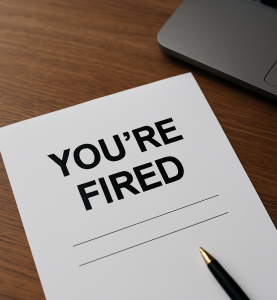On 25 May 2020, 66 days into the statewide shut down due to the COVID-19 pandemic, the racial tensions were at an all-time high due to the death of George Floyd. His death sparked worldwide protests in at least 40 countries, over 550 cities, and over 26 million protestors for seven months. These protests lead to a racial reckoning of sorts. Various companies make statements in solidarity, pledging internal change, police reforms being proposed on the federal level in the United States and jurisdictions in over 20 states. The protests led to the removal of numerous monuments and statues of figures with controversial legacies. These protests, coupled with the growing division caused by the upcoming Presidential election, polarised our nation. The issues of inequality and racial injustice became a daily staple on the news. With tensions running at an all-time high, the intolerance for more of the status quo grew with each passing day. Individuals and corporations alike recognised, more than ever, the urgency of taking expeditious remedial action to address racial abuse in the workplace.
Six months later, without a developed plan in place, many employers are still struggling with addressing racism in their institutions in quick and effective ways. Recognising the different ways race discrimination manifests is a fundamental step in this process. The four types of race discrimination are: disparate treatment[1] (direct), disparate impact[2] (indirect), harassment[3] and retaliation[4]. Disparate treatment happens when you are treated worse than someone else because of your race. Disparate impact is when an organisation has a particular policy or way of working that puts people of your racial group at a disadvantage. Racial harassment occurs when someone makes you feel humiliated, offended, or degraded because of your race. Retaliation occurs when you are mistreated because you have made a complaint of (or supported someone who made a complaint of) race-related discrimination. Many times, more than one type of race discrimination can exist in the workplace. It need not be overt; it can be subliminal or appear benign on its face. However, the result is the same; being made to feel "less than" due to your race. Racial microaggressions best exemplify this.
Employers should be preparing managers, investigators, and staff about what microaggressions are, and their impact is an essential step in creating a discrimination-free workplace.
Derald W. Sue, who's written two books on microaggressions, defines the term: "The everyday slights, indignities, put-downs and insults that people of colour, women, LGBT populations or those who are marginalised, experience[s] in their day-to-day interactions with people." Microaggressions often appear to be a compliment or a joke. However, they contain a hidden insult about a group of people (i.e., calling a Black person "articulate", complimenting a person of colour on how good their English is, or comments stating the person is "different" than others in their protected class). Since microaggressions aren't necessarily overt, they are easy to overlook. However, they can be just as harmful as the more traditional discriminatory actions. They tend to be more frequent, more public, and tolerated for more extended periods. Some examples are: making daily comments regarding a Black employees’ natural hair, attempting to touch it in any way, constantly interrupting or talking over a Hispanic employee, over-explaining, or otherwise ”translating” statements made by an Asian employee, asking invasive questions about their hair care routine. These examples are not only offensive but, in some cases, actionable. Employers should be preparing managers, investigators, and staff about what microaggressions are, and their impact is an essential step in creating a discrimination-free workplace.
The most effective companies will: 1) let their employees know where they stand, 2) support their stance with an easy reporting process, 3) honour the reporting process with a quick and transparent investigation, and 4) follow up the investigation with decisive action regardless of the outcome.
Knowing Where Your Employer Stands
Promulgating an atmosphere of inclusiveness free of discrimination is more than having a well written anti-discrimination policy. It is how anti-discrimination is discussed, the resources allocated to it, and how it is otherwise supported throughout the organisation. Being more diverse is a good start. However, getting employees that can "check" different boxes will not solve the problem. An employers' commitment to diversity and inclusive environments will be evident in their support and do what is necessary to retain them. For example, having programming such as affinity groups, events celebrating culture, diversity, guiding, and supporting healthy dialogue. Whenever possible, this should be communicated by upper management and repeated by mid-level managers.
Amplifying the message of inclusiveness will make sure that it is understood as being part of the corporate culture. Companies should take every opportunity to re-emphasise diversity and inclusiveness. If these are absent from the organisation's culture, it may be a red flag that inclusiveness is not a priority. It should be felt, understood, and practised by all employees.
An Employer Should Have an Easy Reporting Process
The reporting of issues and concerns surrounding racial abuse should be transparent, widely known, and safe for all employees. Generally, anti-discrimination and Equal Employment Opportunities (EEO) policies are discussed during the onboarding. However, it may not be revisited until needed. Repeat EEO training should be done annually.
Any investigation into a complaining employee’s concerns should be both transparent and quick. It is a red flag when the process is filled with unexplained secrecy and delays.
Having multiple reporting structures for discrimination is very important. Employees should be able to report the discrimination to any manager, an EEO officer, and/or department, an anonymous hotline and/or an online reporting form. These complaints should be acknowledged in writing upon receipt with instructions and timelines for the process within a short time. However, if they are not, an employee can memorialise verbal complaints by emailing the person you complained to with a synopsis of your conversation. Regardless of their response, this email will have a date and time stamp as to when the employee complained. This will document the complaint making it easier to prove that a complaint was made. Ideally, when the complaint is confirmed in writing, it will keep the complaining employee informed and the investigative team on pace. Companies may encourage complaints to be in writing. However, the law does not require this. Once an employee complains of discrimination, that is considered a protected activity. Although there are no magic words that need to be said for this to be covered, it does need to be explicit enough that a person would know that the employee is making a complaint of discrimination. Whenever possible, state expressly what the discrimination looks like giving examples of unfair treatment and harassment that is based on race. Once a complaint is made, the employee cannot be punished for making it. A good employer will reinforce its anti-retaliation policy in any acknowledgement of a complaint. Regardless if they do so, this is an employees’ right.
Complaining of discrimination can be a terrifying process for an employee, even if they have complained of other things in the past. The fear is always that they will suffer retaliation. As a result, many employees suffer in silence. Without complaints, an employer will never fully understand the employee's experience in the work environment. The more comfortable an employer makes the complaint process, the more readily that employees will highlight growing discriminatory concerns before they get out of hand.
An Employer Should have a Quick and Transparent Investigation Process
Any investigation into a complaining employee’s concerns should be both transparent and quick. It is a red flag when the process is filled with unexplained secrecy and delays. Maintain vigilance when attorneys conduct investigations. This is not always a red flag, however, it is best practice to consult with your own attorney before being interviewed as part of an investigation into racial discrimination. Consultations are generally free.
Employers should know that employees are resistant to speaking to attorneys. It can curtail responses and candour. Ideally, investigations should be done by independent investigators with experience in discrimination matters. However, that is not always possible. Most investigations are done internally by someone in human resources or some other designated department.
Ideally, employees should be permitted to bring whomever they wish to any interview. However, this is rarely allowed. Many employers feel that presence of other risk interference during its investigation. If an employee is permitted to bring someone, that person should be an attorney. To preserve the integrity of the process, those individuals should not participate and/or speak.
Under no circumstances should a complainant be required to stay home pending investigation without pay.
After all interviews are concluded, an investigative report is generally drafted. Written statements and/or copious notes from interviews should be part of the investigative files. Pay attention during the interview if notes are taken. Ask if the interview is being recorded. Provide information that will help the company independently vet the information that helps prove that discrimination occurred: by way of example, arrivals and departures verified by key cards, video surveillance, a search of emails for information, etc.
A report should be prepared to memorialise the investigation, information gathered and any conclusions. The results of the investigation should be shared with the complainant. This should be in person. However, there is no law requiring it. Employers should see this as permitting the opportunity for additional questions for the employee. In New York, it is now required that the results be shared in writing. If the complainant does not receive a written response, they should request it. The timing of an investigation will vary widely. The reasonableness of the time taken for the investigation depends on many factors, including the allegations' complexity, the availability and cooperation of witnesses, evidence, etc. Completion within 30 days from receipt of the complaint is generally deemed as being reasonable.
Not every complaint will be investigated. Sometimes if a complainant is uncooperative, the allegation will not be investigated. That is a poor practice that could lead to serious legal exposure for an employer and is a major red flag to an employee. Remember, a prudent employer who values inclusiveness will want to identify and address racial abuse—that should not be impeded if the complaint is anonymous or the complainant is uncooperative. As an employee, this should not discourage attempts to have an outsider like the Equal Employment Opportunity Commission (EEOC) by filing a charge of discrimination.
Under no circumstances should a complainant be required to stay home pending investigation without pay. If this occurs, employees should complain to human resources and/or the EEOC that they are being retaliated against.
Allegations of racial abuse that include violence, particularly the use of a noose, should be treated with additional care. The employee should consider involving law enforcement as it may trigger a crime, in addition to workplace violence policies. If an employee is involved in an incident with a noose, it can be incredibly painful, given its historical significance. “The hangman's noose, a symbol connected to lynching, is one of the most powerful visual symbols directed primarily at Blacks.” [5] It is considered violent speech. It is as terrifying as a burning cross. Should your organisation have a noose allegation, once an accused is identified, suspension (whether paid or unpaid) should be considered to minimise risk. Anything less can be viewed as an unreasonable response and lacking care. The employee should contact an attorney to help navigate the workplace concerns when a noose or other violent threats based on race occur.
Regardless of the outcome, any employee accused of wrongdoing must be reminded that behaviour like those alleged and retaliation will not be tolerated. This is the bare minimum of what a company should do. If that does not occur, the complaining employee should note it as a red flag.
An employer should, whenever possible, seek to keep the complainant and accused apart.
Post Investigation Follow Up and Decisive Action
After the conclusion of the investigation, there should be a follow-up. If, after the investigation, things continue to deteriorate, an employee should complain again. The company must follow up with the complainant to check-in regarding any additional issues or retaliation. Employees should be encouraged to bring complaints or other evidence to the company's attention. Overwhelmingly, retaliation cases form the bulk of new cases filed with the EEOC. As such, it is a land mine for employers and a widespread occurrence for employees. Any retaliation should be reported by the employee as soon as practicable to avoid further issues.
An employer should, whenever possible, seek to keep the complainant and accused apart. Suppose an employee is not given that option. In that case, they should request a transfer, change in schedule or in their reporting structure to avoid further incidents. If the complainant reports to the accused, an alternate reporting structure should be considered by the employer. Alternative shifts, different locations and/or permitting employees to work from home are all possibilities to keep complainants and the accused apart. These options may not be available in every work environment. However, employees should not be afraid to make the requests (in writing) to protect themselves. If the employer is taking intentional steps to minimise issues between the employees, it could assist in repairing the working environment. Regardless of the investigation's findings, there needs to be a path forward for both employees. The complainant should not be placed in the position of peril for complaining. If the allegations are unfounded, the respondent should have the guidance necessary to make any adjustments to their behaviour. However, if things worsen, the environment may become intolerable. Any employee considering resignation should consult with an attorney first. Resigning from your position may impact whether you have a claim and/or how it is valued.
In the final analysis, if fostering inclusivity and anti-discrimination environments is part of an employer's goal, these initial steps are a good start. Suppose these policies and practices are not present. In that case, the employee should be aware that it may make addressing and remedying racial abuse a challenge.
MARJORIE MESIDOR
Partner
PHILLIPS & ASSOCIATES
45 Broadway, Suite 430
New York, New York 10006
(212) 248-7431 ext. 204 (telephone)
(212) 901-2107 (facsimile)
www.harassmentlawfirm.com
Ms Mesidor is a Partner at Phillips & Associates, PLLC, a premier boutique employment discrimination and wage-hour law firm in New York City, Long Island, White Plains, Jersey City, Philadelphia, and Miami. She regularly goes against Fortune 500 companies with over $35 Million in settlements and verdicts. She is known for her role as lead attorney on a landmark case regarding same-race discrimination. The Office of the Public Advocate recognised her work. Her $2.31 Million verdict for a race claim is listed on the U.S.'s Top 50 Employment Verdicts of 2018. She is fluent in Italian, French, and Haitian Creole.
Phillips & Associates is a workplace discrimination law firm serving the New York City and Tri-State area. Over the past seven years, their attorneys have obtained over $85,000,000 in settlements and verdicts for victims of discrimination. Most of their verdicts and settlements are single plaintiff employment related cases; not class action civil rights cases or personal injury cases.
Phillips & Associates has established itself as the go-to law firm in New York for victims of sexual harassment and discrimination. Most recently, Phillips & Associates was selected as one of the “10 Best Employment & Labor Law Firms” in New York” by the American Institute of Legal Counsel.
[1] By way of example if a Black person is not hired for a job because of the employer's belief that Blacks are lazy.
[2] An example of disparate impact is if a hair salon does not hire a stylist covering their hair. This would have a disproportionate affect on Muslim women and Sikh men.
[3] The use of racial slurs in the workplace over your objection, regardless of intent, can be a form of harassment if you are offended by it.
[4]. When you complain about racism and are punished by your employer by being disciplined, being demoted, losing pay, or being terminated is an example of retaliation.
[5] https://www.adl.org/education/references/hate-symbols/noose





















